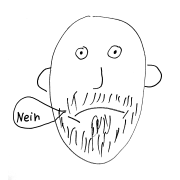Leica M10 Monochrom Technical Data
-
Recently Browsing 0 members
- No registered users viewing this page.
-
Similar Content
-
- 6,037 replies
- 563,918 views
-
- 9 replies
- 753 views
-
- 1 reply
- 886 views
-
- 3 replies
- 329 views
-
- 19 replies
- 543 views
-




Recommended Posts
Join the conversation
You can post now and register later. If you have an account, sign in now to post with your account.
Note: Your post will require moderator approval before it will be visible.